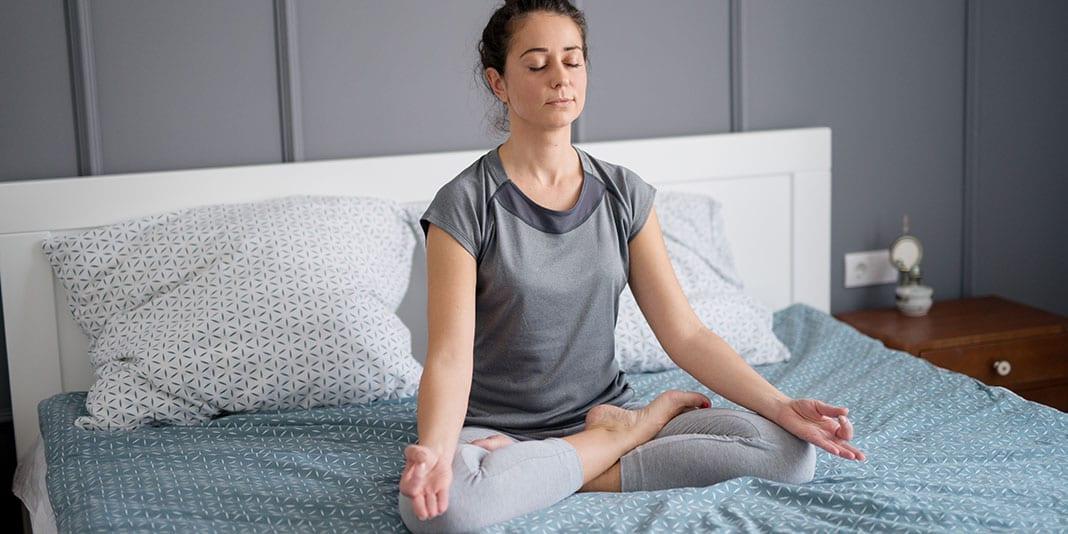Correct breathing is an essential part of an exercise program, but you may have to learn how to do it if you are just beginning exercise or resuming exercise again after a break. “Say what?” you ask indignantly. “I’ve been breathing all my life!” you protest. Relax and inhale deeply while your trainer guides you toward the right way to breathe. Her instructions may seem downright odd and counter to the way you normally take in air, but there’s method to this madness.
You may assume that the best way to take a deep breath during exercise or stretching is to expand your chest while lifting your shoulders. That’s a mistake. University of New Mexico researchers say the best way to get a full, deep breath while exercising is to breathe from the diaphragm, which is the muscle that extends across the bottom of the chest cavity. The inhalation should push out your belly and expand your rib cage at the same time.
During strength training, you should inhale on relaxation and exhale during exertion. For cardio training, generally breathe in and out through the nose. When cardio becomes more intense, breathe through the mouth.
This may seem strange if you aren’t accustomed to it. Here’s why: You are accustomed to breathing from the chest when you are not exercising. Proper breathing for exercise calls on you to switch to breathing from the diaphragm muscle. You’ll be trying a breathing technique you haven’t been using in your average daily life, and you may have to practice getting it right.
During your normal day, you don’t have to think about breathing. The respiratory center of your brain sends automatic messages to your respiratory muscles and tells them when to breathe. When you exercise, your brain notes that your blood is carrying the byproduct of exercising muscles—an increased level of carbon dioxide and lactic acid. Your brain wants to rid your body of all that extra carbon dioxide and deliver additional oxygen to your working muscles, so it tells your respiratory muscles to increase the speed and depth of your breaths.
The breathing technique that your trainer wants you to learn gives you deep, full breaths that fill your lungs with the air and oxygen your body needs for exercise. Researchers at the University of New Mexico say proper breathing is central to nonaerobic forms of exercise, including weightlifting, yoga, tai chi and Pilates. A good breathing pattern makes sure your working muscles continue to receive the oxygen they need to keep contracting while you are running or swimming.
If you’re attempting the new technique but you don’t know if you are breathing properly from the diaphragm, try this: Place your hands on your lower ribs. As you breathe in, you should feel your ribs rise. As you breathe out, you should feel your ribs fall.
Making the effort to learn proper breathing really pays off. Breathing properly during exercise will help you exercise more comfortably and safely. The right technique will prevent injuries such as hernias, spikes in blood pressure, and back pain. You’ll be able to exercise for longer periods of time. Correct breathing will increase your ability to relax and stay focused on your exercise.



































